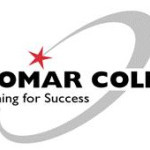- Branża: Education
- Number of terms: 12355
- Number of blossaries: 0
- Company Profile:
Founded in 1946, Palomar College is a public two-year community college in the city of San Marcos, located in north San Diego County, California. Palomar offers over 300 associate degree, certificate programs and is designated by the U.S. Department of Education as an Hispanic-Serving Institution ...
A kind of energy charged subnuclear particle (consisting of an electron or a positron) given off by some isotopes when they decay or fission.
Industry:Anthropology
A hypothesis to explain the origin of modern Homo sapiens. It proposes that the first modern humans evolved in Africa, but when they migrated into other regions they did not simply replace existing human populations. Rather, they interbred to a limited degree with late archaic humans resulting in hybrid populations.
Industry:Anthropology
A kind of protein produced by the body to identify and neutralize or destroy alien antigens. Antibodies are involved in the rejection of mismatched blood transfusions and organ transplants. They are also responsible for recognizing and eliminating bacteria and viruses. Antibodies provide a major defense for our bodies against invasion by alien organisms.
Industry:Anthropology
A complex unit of protoplasm, usually with a nucleus, cytoplasm, and an enclosing membrane. All plants and animals are composed of one or more microscopic cells. The smallest organic unit capable of carrying out all of the functions normally attributed to life is a cell. See eukaryotic cell and prokaryotic cell.
Industry:Anthropology
A method for dating organic matter that is based on the fact that amino acids progressively change to mirror image forms following the death of an organism--i.e., from L-amino acid to D-amino acid forms. Aspartic acid in organic samples is commonly used for this dating technique. Amino acid racemization could be considered to be a chronometric or a calibrated relative dating method.
Industry:Anthropology
A long period of time during which earth's climate cools, causing glaciers to expand out from the poles and mountains covering vast areas. The glacials of the Pleistocene Epoch mostly occurred in the northern hemisphere. See interglacial.
Industry:Anthropology
A bony arch extending horizontally on either side of the face just below the eyes on primates and many other vertebrates. The major jaw muscles pass under these two arches on their way up to the temporal areas of the skull for attachment.
Industry:Anthropology
A chromosomal abnormality in which there are extra complete multiples of chromosome sets (e.g., 23 + 23 + 23). Polyploids are rare among animals but common in plants. A mosaic polyploidy (with only some ployploid cells) is the common animal form. See aneuploidy.
Industry:Anthropology
A genetically inherited recessive condition in which red blood cells are distorted resulting in severe anemia and related symptoms that are often fatal in childhood. Sickle-cell trait is the result of a pleiotropic gene. People who are heterozygous for this trait rarely have these debilitating and ultimately fatal problems but do have a high degree of immunity to malaria. Sickle cell trait is at its highest frequency among Central African populations and among people whose ancestors came from that region. Sickle-cell trait is also known as sickle-cell anemia.
Industry:Anthropology
A situation in which a gene has more than two alleles. The ABO blood type system is an example. Multiple-allele series only partly follow simple Mendelian genetics.
Industry:Anthropology
